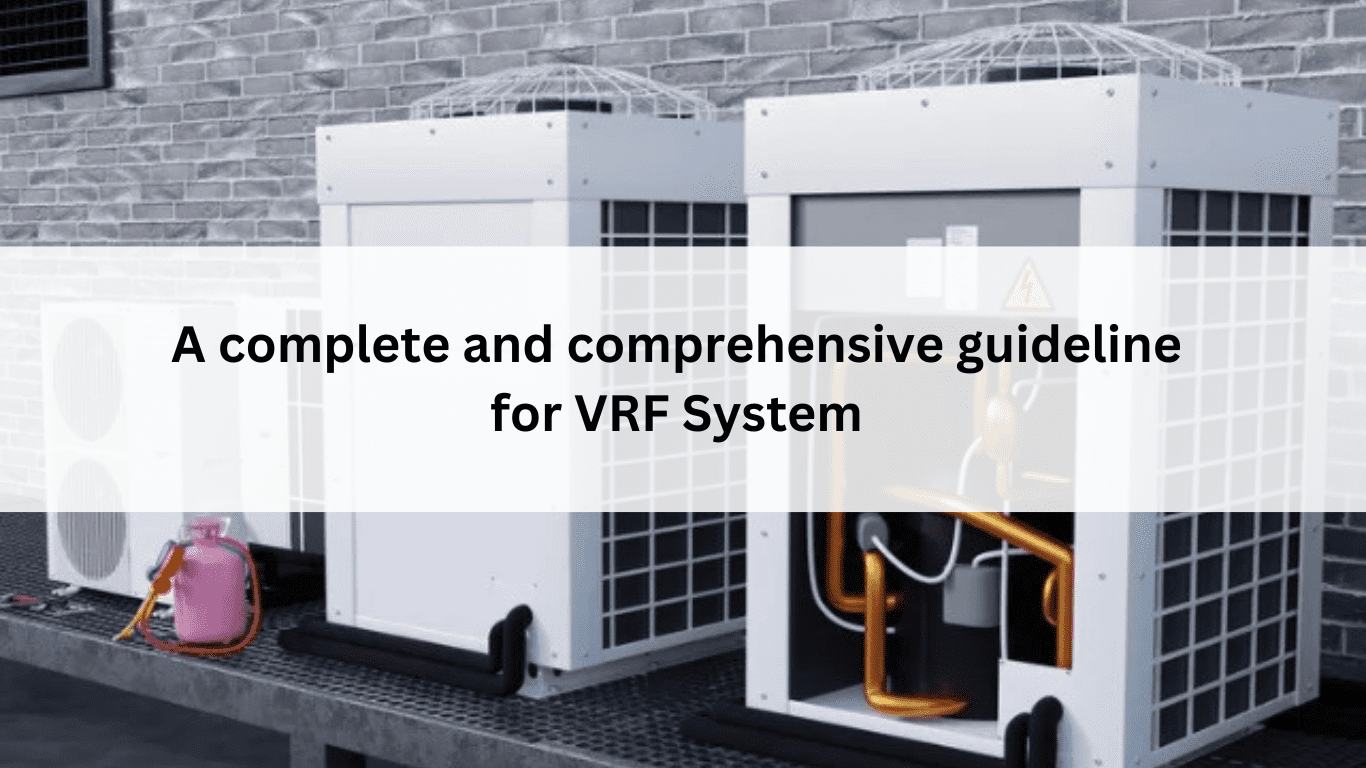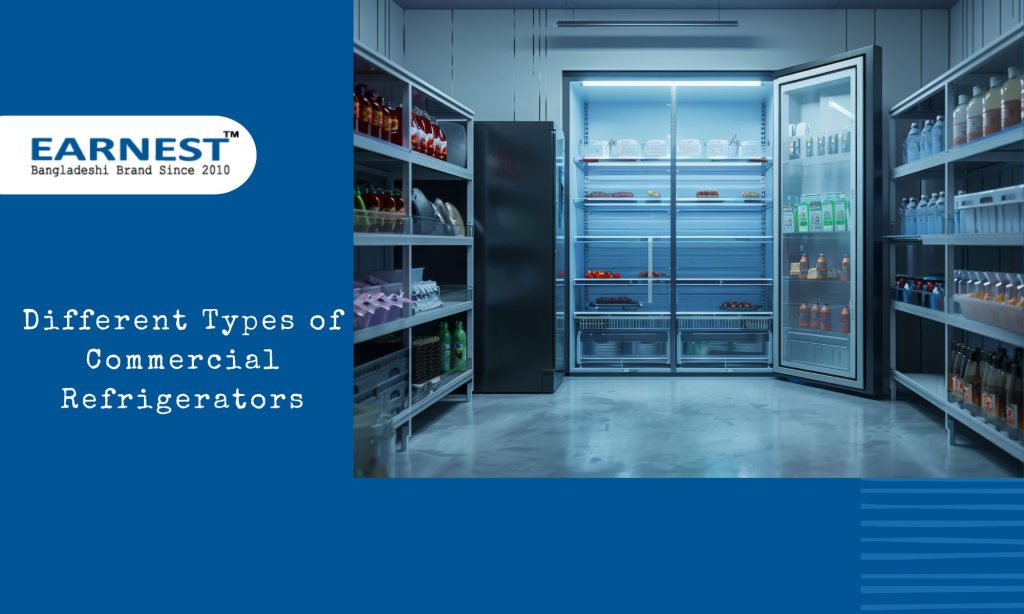In the world of air conditioning, VRF, or Variable refrigerant flow, is gaining popularity at a fast rate and for good reasons.
VRF units are designed to keep modern structures warm during winter and cool during summers in an energy-efficient and cost-effective manner. These powerful, effective, and customizable systems are also easy to install.
If you are planning to install a conditioning system in today’s time, there is no better choice than a VRF system. Keep reading to learn more about the VRF air conditioning system, its types, and how it benefits you.
What are VRF Systems?
Variable refrigerant flow or VRF system is a sophisticated form of HVAC system that replaces water with refrigerant as the heating or cooling medium, implied by the name. It consists of a single outdoor unit connected to multiple units or zones indoors via piping to cool or warm a specific area.
The great thing about VRF units is that you can adjust the flow of refrigerants based on demand. This ability to manage the refrigerant amount delivered to fan coil units situated throughout the structure makes the VRF technology perfect for applications where zoning is needed or for those with varying loads.
VRF systems can offer variable refrigerant flow and speed because of inverter compressors. They allow the VRF compressor to ramp up or down depending on the requirements of each place. Unlike non-inverter systems that are either on or off. VRF units function at a needed rate by operating at different speeds, saving substantial energy at load conditions.
VRF units are available either as heat recovery or heat pump systems for those uses where heating and cooling are required simultaneously.
So basically, because of their premium comfort, design flexibility, cost-effectiveness, and energy savings, these systems have become vital to most institutional, commercial, industrial, and residential facilities.
How Does a VRF System Work?
As mentioned, in a VRF unit, several indoor units are connected to only one outdoor condensing unit with a heat recovery system or a heat pump. The outdoor unit features one or more compressors with an inverter that allows for speed control simply by adjusting the frequency of power supplied to the compressor. As a result, the amount of refrigerant delivered by VRF also changes.
At the same time, each indoor fan coil system comes with a metering device managed either by the indoor unit itself or the outdoor one. When the indoor unit sends a command to the outdoor unit, the latter delivers a specific amount of refrigerant to the inside units.
By only supplying the amount of cooling or heating needed, the inverter compressor allows to save a large amount of energy. Plus, it automatically shuts off when it detects no persons in a room. These unique features of VRF make it sustainable in the long run and help people reduce energy costs and carbon emissions. Additionally, VRF can operate at a high capacity without duct tape, making it easy to install and helping save space.
What are the Two Types of VRF Systems?
Two main types of VRF units exist – Two-pipe and Three-pipe systems.
Two-Pipe System
VRF Two pipe system also referred to as heat pump systems, allows for indoor heating and cooling but NOT at the same time. When the indoor units are in the heating mode, they function as condensers, while in the cooling mode, they act as evaporators.
This system is effectively utilized in open areas, cellular offices, retail stores, and other areas that need heating or cooling during the same operational periods.
Three-Pipe System
Unlike a heat pump system, a heat recovery system permits heating and cooling in indoor units at the SAME time. Also known as three-pipe units, each recovery indoor unit works with other terminal units and respective thermostats of each zone to determine if they require cooling or heating.
This VRF system is suitable for structures with mixed-temperature needs who would like to reduce their energy consumption. Some examples of these structures are large office complexes, multifamily buildings and institutional facilities.
What are the Benefits of Installing a VRF System?
Here are some of the main benefits of a VRF system that makes them a good pick.
1. Consistent Comfort
VRF systems offer comfort consistently as their compressor units identify the specific temperature requirement of space and provide it with the right amount of heating or cooling.
In a conventional system, the compressor is typically off or on, so even areas that feature personal controls experience changes in temperature as the compressor shuts off and restarts again.
On the other hand, in the VRF unit, the compressor does not turn on and off. It operates smoothly and consistently for an extended time. The demanded refrigerant flow is supplied to the indoor unit, and once it is reached, the refrigerant automatically adjusts to maintain the space temperature without any alteration.
2. Noiseless Air Conditioning System
Another good thing about the VRF air conditioning system is that it supports a quiet environment inside the building structures. Since the condensing units are the main culprits of noise in the air conditioning system, they are situated outside your building in the VRF case.
Also, the indoor units of VRF are quieter and more compact. Thus you don’t have to worry about noise disrupting your business functioning.
3. Customized Temperature Control
A significant benefit of installing VRF systems is that you can heat and cool different zones in a facility simultaneously, and residents can also customize per their need temperature settings. You can’t leverage this in HVAC systems as they are either on or off.
4. Flexible Design
VRF system manufacturers provide products in different sizes and types to meet the demands of different applications. You can also find compact units with limited piping, such as a two-pipe system, that can be easily installed in a limited space for use.
5. Easy Installation
Undoubtedly ducted HVAC systems are heavy and, consequently, difficult to install.
Since the VRF outdoor and indoor units both are typically compact with less weight and require no ducts, their installation is a cakewalk. As such, no need to ring up crane operators for rooftop installation as the VRF systems will quickly and effortlessly fit in the service elevator.
That said, this easy and flexible installation will help you save time and money too.
6. Energy-efficient
One of the most notable benefits VRF units provide is that they support energy efficiency. While other systems like HVAC function at a single speed, these operate at variable speed and only deliver the required refrigerant per room temperature. As a result, they function in a lower capacity and less frequency and end up saving energy.
Plus, since no ductwork is involved, no energy loss occurs, usually because of them.
Final Thoughts
With the above-given information, it is clear that a VRF air conditioning system is the perfect choice for your next building structure. It offers superior comfort with design flexibility, energy efficiency, and customized temperature settings, amongst other things.
Plus, VRF system manufacturers provide the product in different sizes and models to fit your varied application needs.
There is hardly anything one can ask for more!






